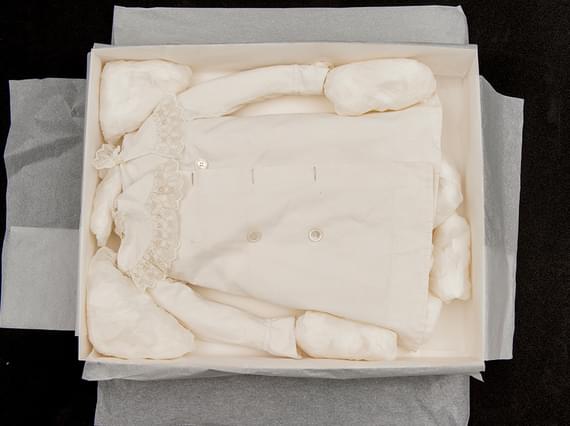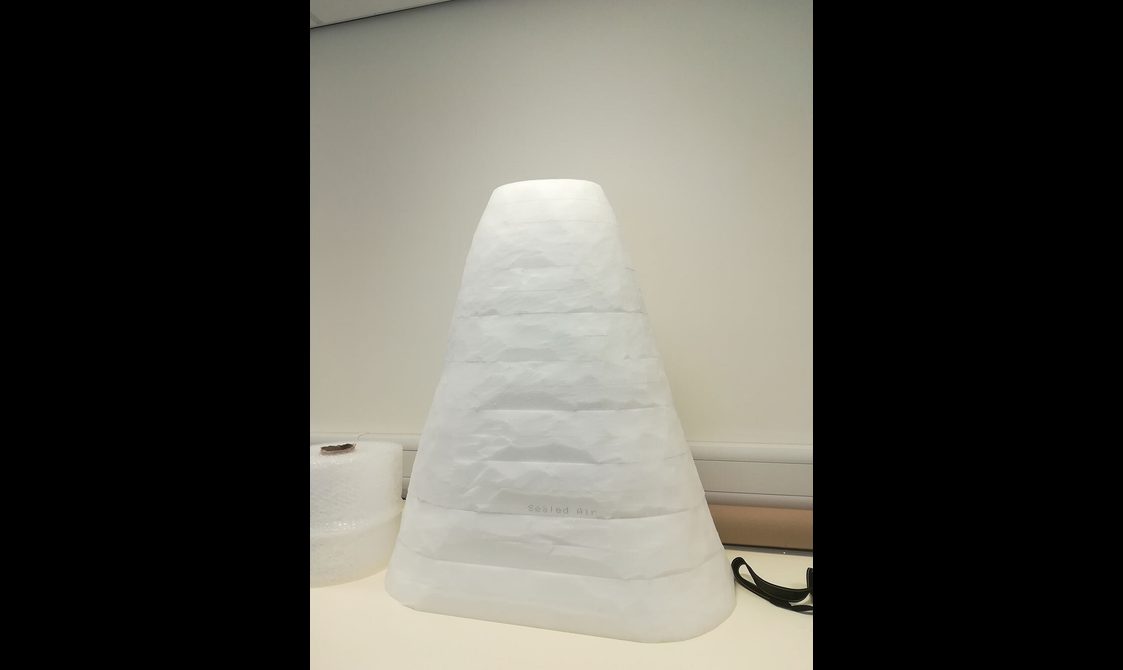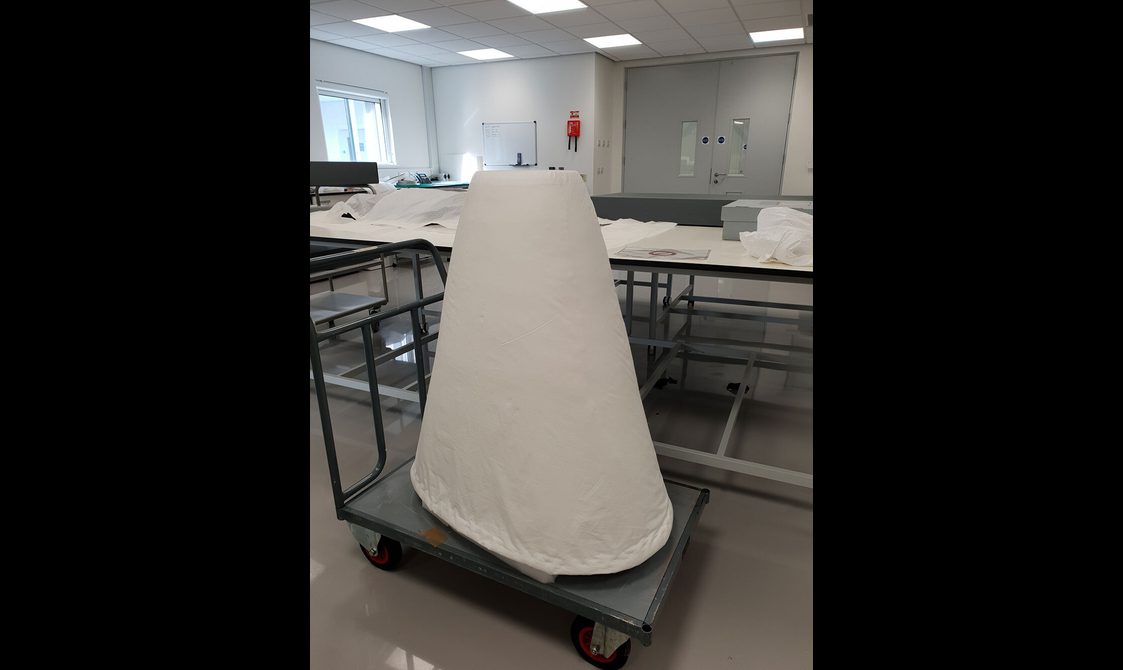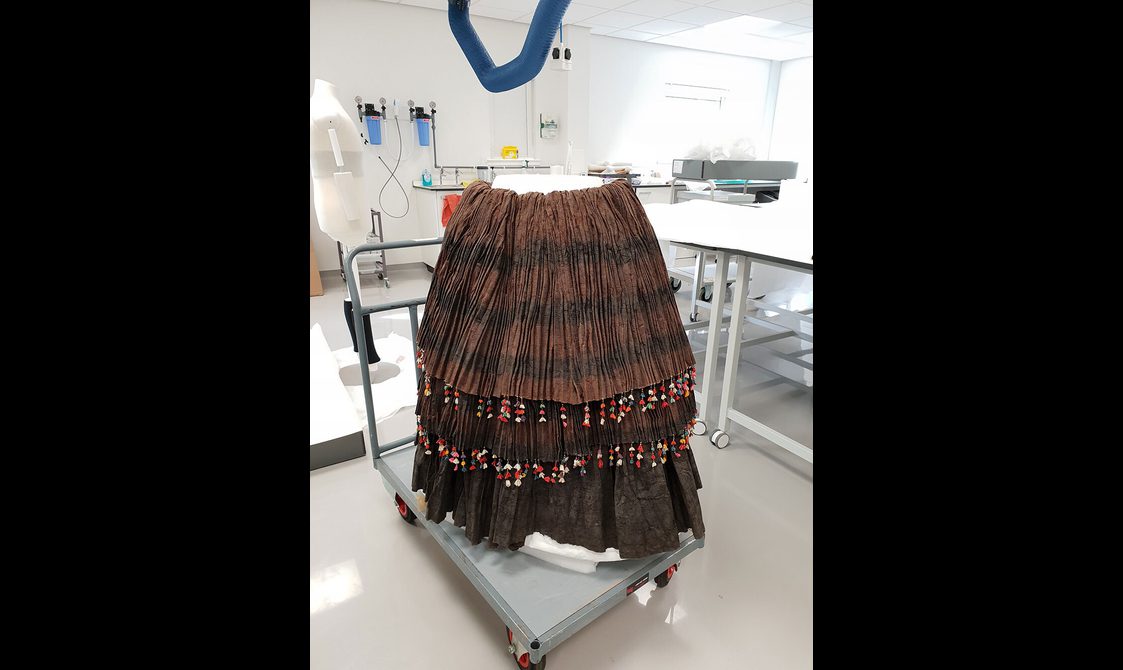
How to pack textiles
Textile creases cause splitting and can require interventive conservation treatment.
When packing textiles, you should aim to limit the risk of them becoming creased and damaged.
The three most common textile packing methods are:
- hung
- boxed
- rolled
Hanging textiles
Hanging textiles is appropriate for costume in good condition—many 20th century and military collections are stored this way. This method should not be used for garments that cannot support their own weight such as woollen or heavily beaded items.
Guidance
- Hangers should be of good quality and padded to the correct size and shape for the garment with suitable materials.
- Covers should be used to protect costume from dust and to stop snagging between items.
- Previously costume bags were made from washed cotton, but now Tyvek is more popular.
- You should be careful not to overfill rails (particularly if not using covers) as this can result in snagging and creasing of textiles where they have been.
Boxing textiles
Download our method statement
Rolling textiles
Rolling textiles provides a solution for large flat textiles which are too big to be boxed. Rolled textiles can be stored or transported on their roller.
Rolling textiles can be complicated and should always be conducted by someone who has practice or training. Always consult a conservator if you are unsure if a textile is suitable to be rolled or how to roll it.
Use the following steps when rolling textiles:
- To start, make sure you have plenty of space for rolling, as folded textiles can be much bigger than expected.
- Textiles should be placed face down on a clean, flat surface for rolling. So the ‘right’ or ‘outer’ face will be on the outside of the roller.
- You may have to turn the textile over before rolling, to get the ‘right’ side out. Smaller pieces in good condition can be carefully lifted and turned over, ensuring that you hold it securely and evenly and lay it down gently. Larger objects may have to be rolled and unrolled to turn them.
- Use an acid-free cardboard tube. It is good practice to roll the roller smoothly in acid-free tissue first. Cardboard tubes that are not acid-free can be rolled in tinfoil first to stop the transfer of acidity, ensuring that multiple layers of tissue are rolled onto the roller before the textile.
- Place a length of tissue under the edge of the object from which you are to start rolling, as this will help it roll on without creasing the edge.
- Cover the object with a layer of tissue before rolling as this will ensure there is a layer between all the rolls of the textile.
- Keep the edge grain of the weave as straight as possible when rolling the textile. Roll towards the labelled end of the object, as this will leave the label most visible and the textile easily identifiable.
- Finish with a tissue then outer wrap of Tyvek. Secure with cotton tape, ensure the tape is loose enough that one finger can slip between.
Rolling large textiles
Large carpets and tapestries are particularly difficult to roll. They often spiral around the roller, and have to be re-rolled and padded out to compensate for this.
Polypropylene ventilation pipes, with a wide diameter should be used with large, heavy textiles as cardboard tubes can break under the weight.
Case study: a fragile textile
There will always be objects which are not suitable for the standard methods of storage.
The bark-cloth skirt shown below is one of those—too big to be boxed, too fragile to be hung. Here we worked with a textile conservator to help create a bespoke mount and handle this large complex object.
The mount was created by shaping plastazote, covering it in Tyvek to avoid any areas where the garment could snag. We placed the skirt onto this structure. The skirt is now stored on its mount, covered in Tyvek bag to protect it from dust.

Pieces of plastazote are glued together to create a rough shape.

The mount is shaved down to create the perfect shape to support the garment.

The mount is covered in Tyvek.

The final result, before being covered for storage.